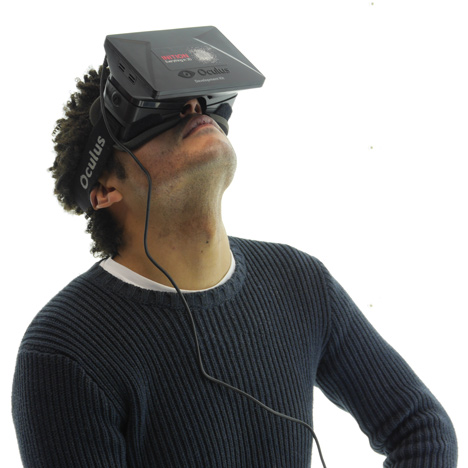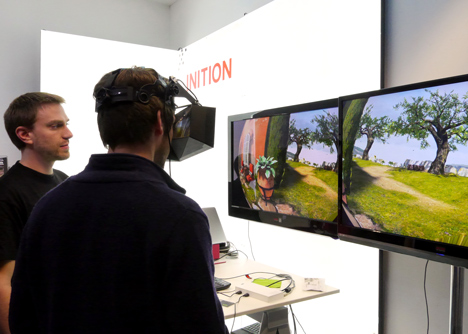
"Cyborg scenario" will see computers in the brain replace wearable tech
News: surgically implanted chips that feed digital information directly into the brain will supersede wearable technology, according to the co-founder of a leading 3D imaging studio.
WiFi-enabled chips mounted inside the skull will be more effective than today's devices such as virtual reality headsets and Google Glass, according to Andy Millns, co-founder of London studio Inition.
"A much more successful way of doing this would be to bypass the eye altogether and directly interface with the brain," Millns said in an interview with Dezeen. "We're already seeing things like this with cochlear implants [electronic hearing implants] on the hearing side."
Millns foresees a "cyborg scenario," whereby the human brain is enhanced with digital implants. "The next step would be to have a WiFi or Bluetooth-type interface to augment the processing capacity of your brain."
Existing virtual reality technology relies on the user wearing a headset, which displays an alternative digital world. These headsets will increasingly become so realistic that people will no longer be able to tell the difference between real and fictional landscapes, Millns said.
"The inevitable future of these things is the ability to have tighter and tighter integration between the display and the human till you end up with a cyborg scenario where you have something embedded inside your brain that has a direct interface to your visual cortex," he said.

A cyborg, or cybernetic organism, is a living being with both organic and artificial parts. In an interview with Dezeen last year Neil Harbisson, the first officially recognised human cyborg, predicted that humans will "stop using technology as a tool and ... start using technology as part of the body." Harbisson, who has a chip at the back of his skull that allows him to perceive colours, said: "I think this will be much more common in the next few years."
While such technology is some way away, Millns believes that augmented reality headsets will soon get so sophisticated that wearers won't be able to tell if they're looking at real or digital imagery.
"We're going to get very close this year to a headset where it's starting to get very difficult to distinguish if you're actually wearing a headset or not," he said. "When we start to get very high resolution headsets, with the type of display technology that we're seeing on the market now, it's going to blur that line between the virtual and the real."
The forthcoming high-definition version of the Oculus Rift headset (pictured above), which was premiered at the Consumer Electronics Show in Las Vegas last week, will represent a giant leap forward in virtual reality technology, Millns said.
The Oculus Rift headset features a stereoscopic screen that creates the illusion of depth, perspective and scale. Sensors mounted on the outside of the headset track the user's movement and move the digital imagery accordingly, allowing the user to explore virtual worlds.

Millns believes the technology will soon allow convincing "telepresence" whereby people feel they are at an event or in a location remote from where they actually are. "Virtual reality is so versatile," said Millns. "You can create a universe from scratch, it can be useful to immerse someone in whatever world you want."
Coupled with advances in 360-degree video cameras - which record in all directions simultaneously - the headsets could allow people remotely to attend events happening elsewhere, such as fashion shows.
"We can actually put thousands of people in a seat by the side of a catwalk and they can actually experience what it's like to be there," Millns said. "You can put someone in any position in the show and allow them to look around as if they were there."
London-based Inition is a production company that specialises in emerging technologies such as augmented reality, virtual reality, 3D printing and 3D scanning. The company created the augmented reality watch store and superyacht that are part of the Dezeen-curated Imagine Shop at Selfridges in London.
Last year Inition developed an "augmented 3D printing" service for architects that allows them to visualise the inside of models of buildings, show the services and structure and show how the building will appear at different times of the day and night.
A video of the interview with Millns will be published on Dezeen soon.
Photography is by Inition, unless otherwise stated.